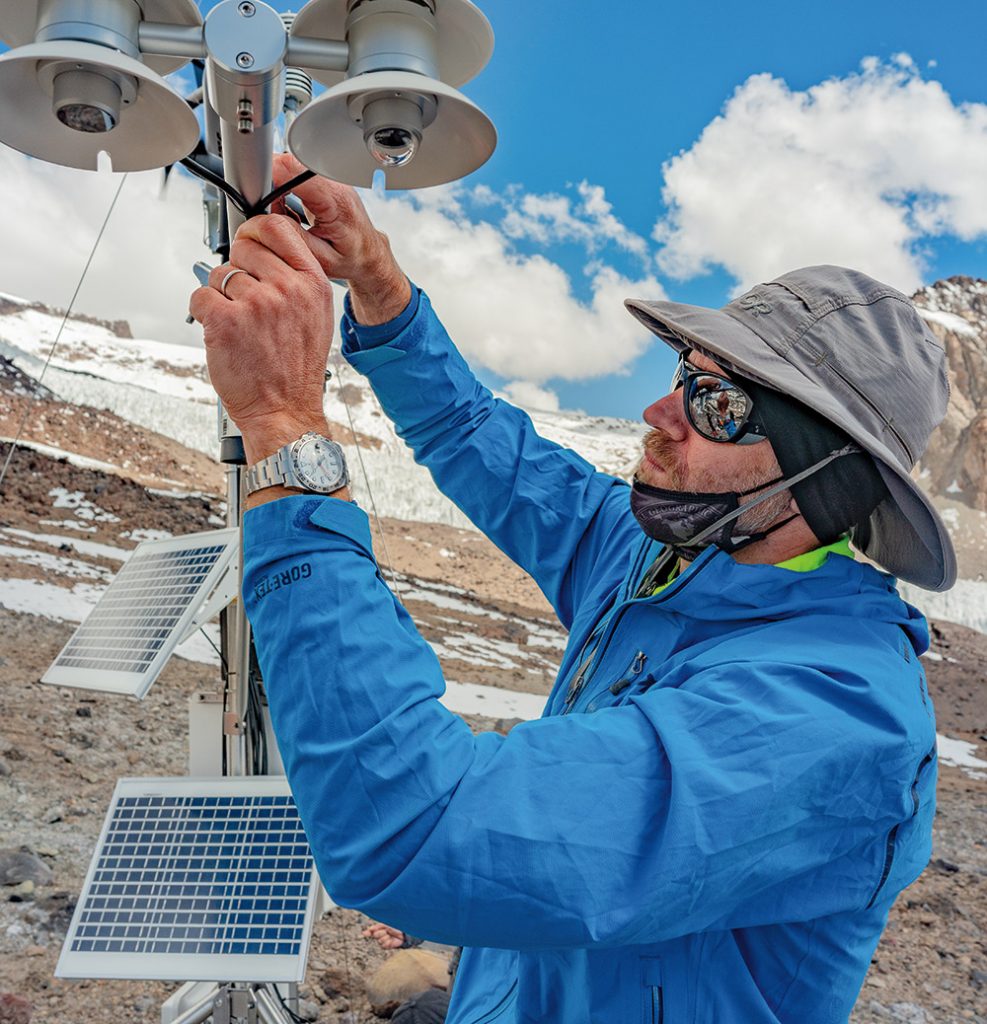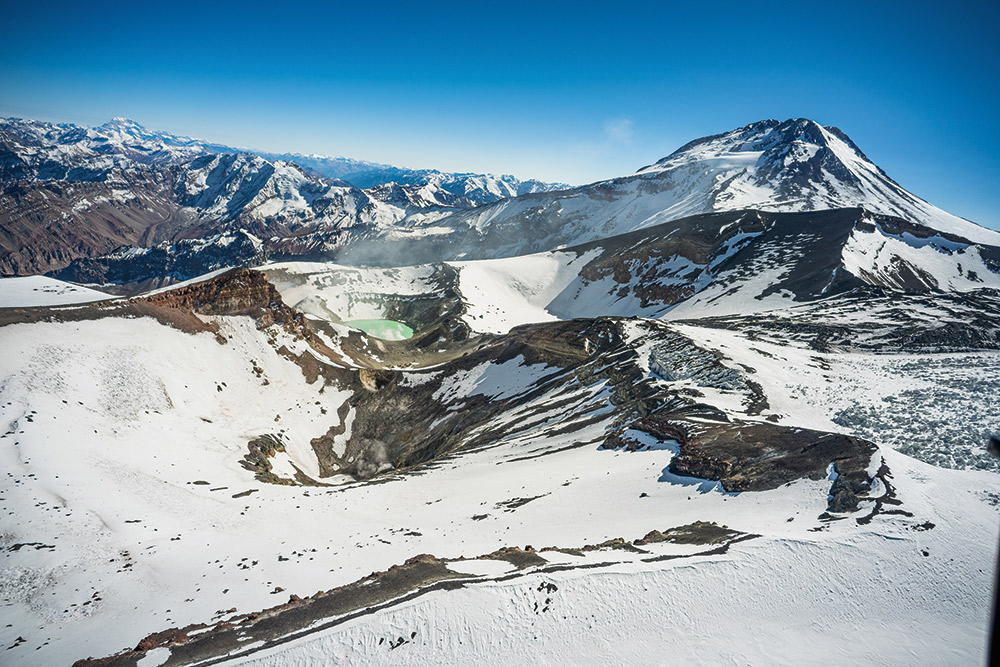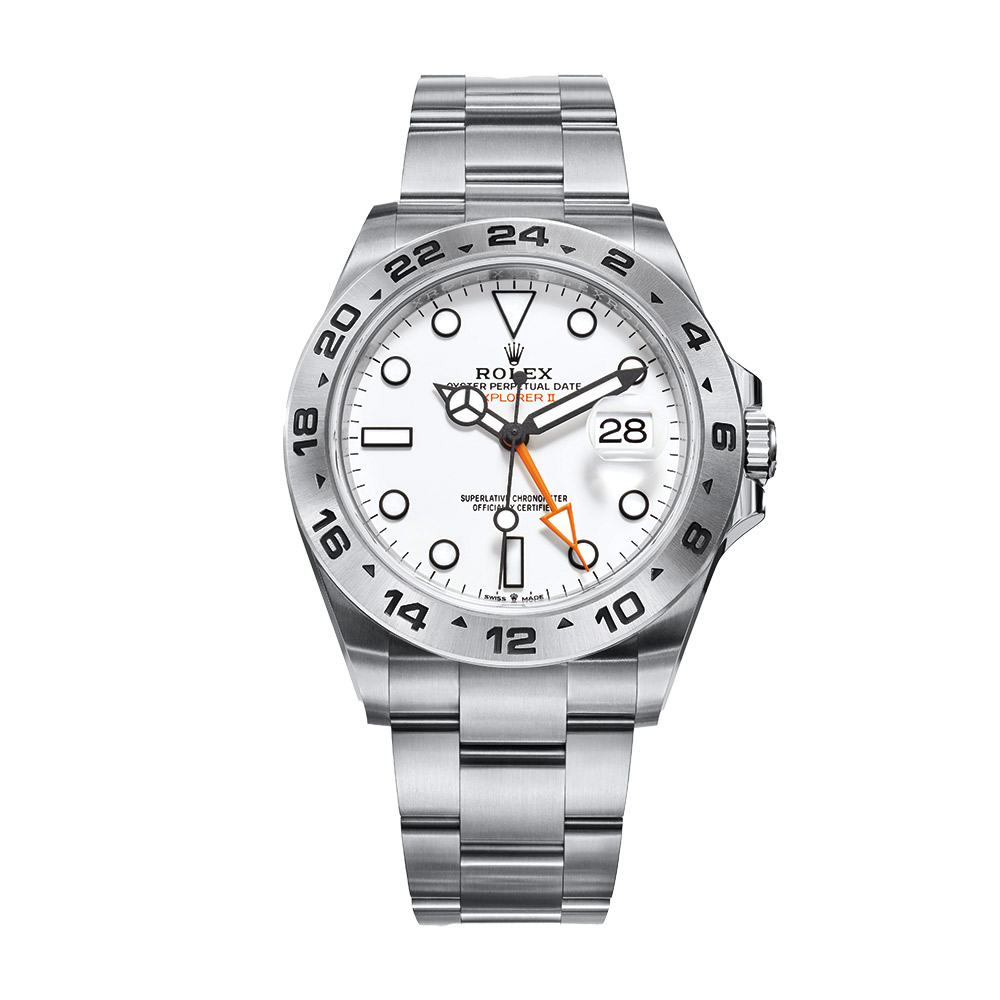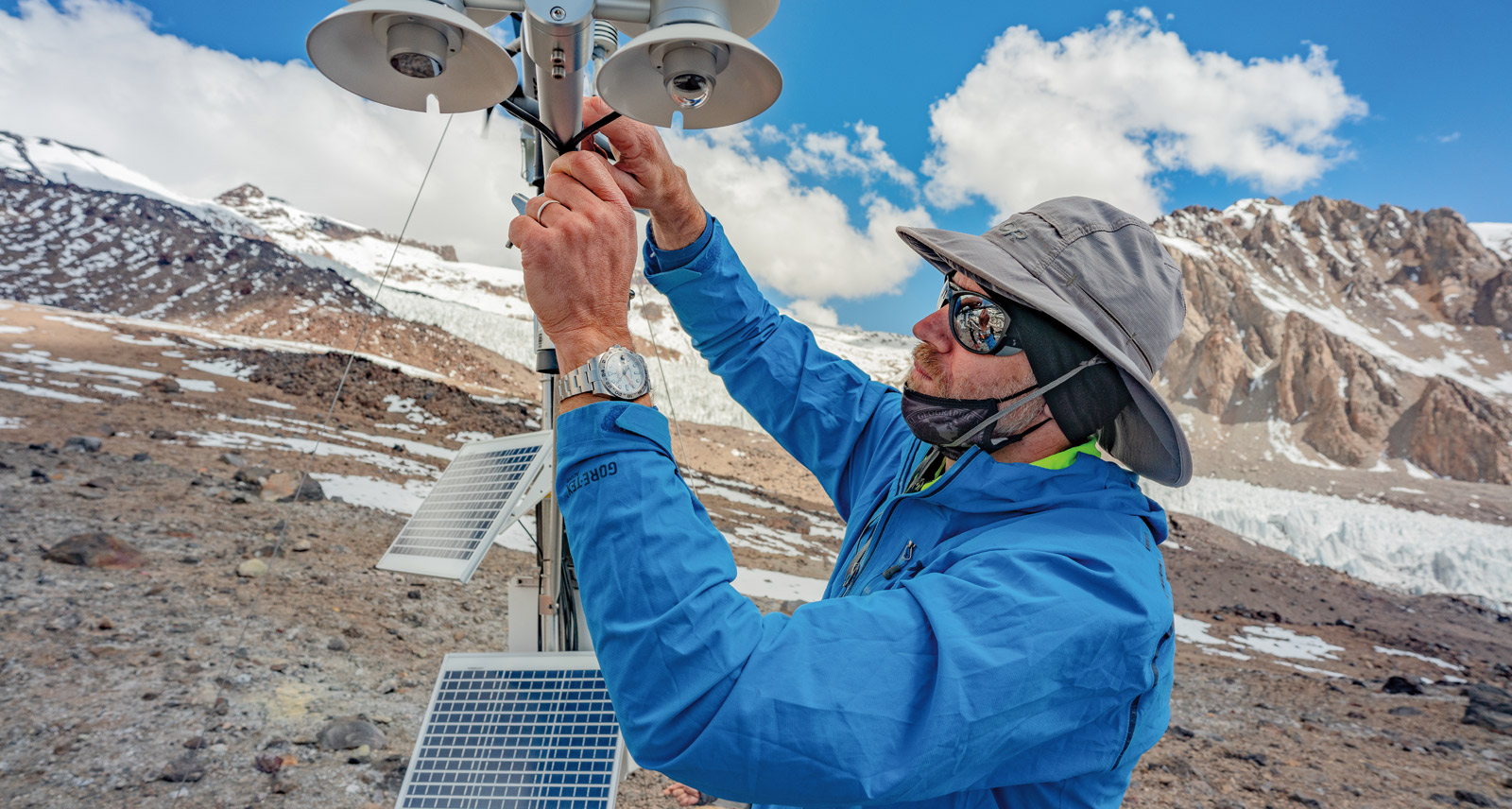How Rolex and National Geographic Are Fighting Climate Change in The Chilean Andes
Rising more than 6,500 metres above sea level, the Tupungato volcano is one of the highest peaks in the Andes, towering over the nearby city of Santiago, Chile. In addition to providing a stunning backdrop for the Chilean capital, the mountain is also a natural “water tower,” a vital source of most of the region’s fresh water. Central Chile, however, is in the midst of a decade-long drought — the longest one in the region’s recorded history — and early this year, a group of scientists ascended the mountain to try to understand why. In addition to a full complement of high-tech meteorological sensors and scientific equipment, the team was supplied with another useful piece of gear, one that has accompanied countless explorers on their missions: the Rolex Explorer II.
Rolex has been assisting in expeditions like this for nearly 70 years. When Edmund Hillary and Tenzing Norgay summited Mount Everest in 1953, they wore early prototypes of the original Rolex Explorer, a model which was reimagined in Oystersteel and 18K yellow gold for 2021. When the bathyscaphe Trieste descended to a record depth of 10,916 metres in 1960, a new experimental Rolex model — the Deepsea Special — went along for the ride, emerging in perfect working order. In addition to their scientific findings, these expeditions helped Rolex hone its case and movement technology, assisting it in creating some of the world’s toughest and most reliable professional watches.

While these early expeditions were focused on exploring as-yet untouched corners of the planet, Rolex has since shifted its focus to those fighting to protect the planet’s last wild places from pollution, climate change, and other human-made threats. Dubbed the Perpetual Planet campaign, this initiative has sponsored climate-change research on Mount Everest and ocean conservation projects led by veteran marine biologist Sylvia Earle since launching in 2019. Part of an ongoing partnership between Rolex and National Geographic, the Tupungato volcano expedition succeeded in setting up a series of weather stations on the mountain, including one at the volcano’s summit. As the highest weather station in the Americas, these sensors will relay important meteorological data to scientists and researchers on the ground. In addition to helping the government of Chile in weather modelling and water resource management, this data will be vital to understanding the accelerating effects of climate change in South America and around the world.
“With the installation of the highest weather station in the Americas, scientists will have a window into atmospheric processes in the high Chilean Andes,” says Baker Perry, a professor at Appalachian State University in North Carolina, a National Geographic explorer, and the co-lead of the expedition. “One of the most vulnerable water towers in the world, these mountains provide critical fresh water to more than six million inhabitants in nearby Santiago. The expedition is contributing to a Perpetual Planet by pushing the limits of scientific discovery and exploration to the highest reaches of the planet.”

The Rolex Explorer II
Part of the Rolex line since 1971, the Explorer II is a tool watch designed to stand up to the harshest conditions on the planet. For 2021, Rolex continues this Explorer’s evolution with improvements to its case, movement, and bracelet. Equipped with the new calibre 3285, a movement that exceeds the specifications set by the Official Swiss Chronometer Testing Institute (COSC), and a crisp new enamelled white dial, the Explorer II maintains its no-nonsense good looks while concealing some very high-tech refinements within. You may not be climbing Denali or skiing across an Icelandic glacier anytime soon, but this watch is definitely up to the challenge should you decide to take it on. $10,500











